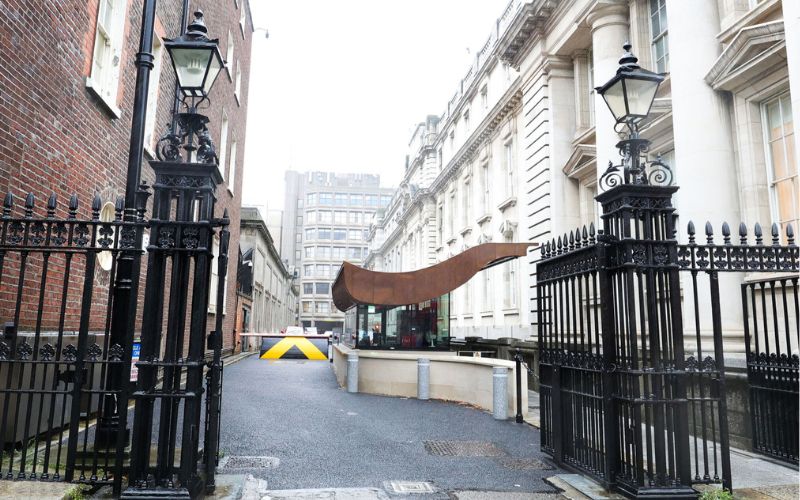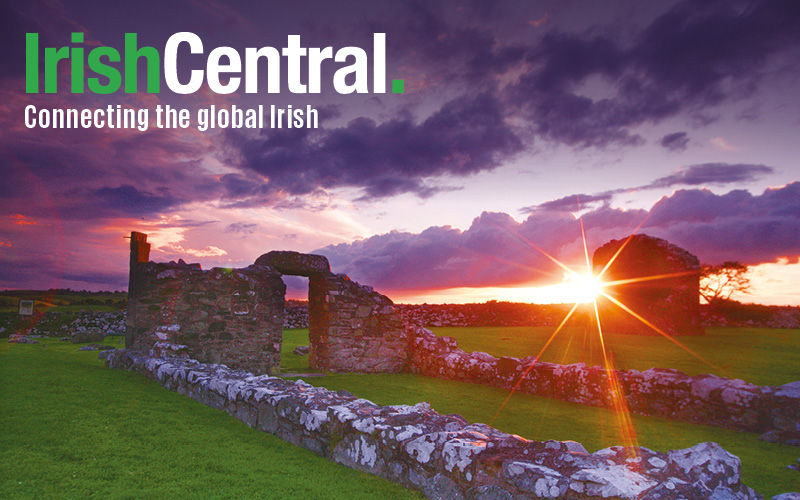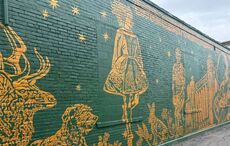The teenage Irish cadets who were invited to the funeral of John F. Kennedy at Arlington cemetery at the special request of Jacqueline Kennedy remember that solemn day vividly 50 years after it happened.
Kennedy made a special request to the U.S. State Department that the Irish cadets who had impressed her late husband with a memorial drill for the dead during his visit to Dublin just months earlier, should perform that same drill by his grave.
It was an immense honor for the cadets, who found themselves closer to the grave than anyone, and they realized they would have to deliver what they called the performance of their lives.
On the day of the funeral the young cadets reportedly waited for hours, standing at attention by the freshly dug grave and offering a striking tableau in their green tunics and brown breeches, rifles ready by their sides.
Fifty years later the men still remember how those hours felt like an eternity, with the faraway beat of the distant drums growing steadily louder as the funeral procession crossed the Potomac River and entered Arlington National Cemetery.
Press photographers from around the world jostled for position nearby, aiming their cameras at the 27 Irish soldiers and asking each other, 'Who are those guys?'
The answer, the Associate Press features writer Helen O'Neil reports, "astounded them."
A day earlier the cadets left their barracks in rural County Kildare to travel with Irish President Eamon de Valera to Washington for the funeral.
With names like McMahon, Coughlan, Sreenan and O'Donnell, they hailed from small towns and villages all over Ireland.
Most had never been abroad, had never even been on a plane. Yet within 24 hours they were offering a dignified and silent salute in Arlington to the U.S. president with the Irish name, John Fitzgerald Kennedy.
'This is not the land of my birth but it is the land for which I hold the greatest affection,' Kennedy told the cheering Irish crowds at the end of his historic four-day visit to Ireland in June of 1963.
His trusted adviser, the late Ted Sorensen, said of his visit, 'The joy never left him.'
In a thank-you letter that Kennedy wrote to de Valera, he said that the Irish trip had been one of the most moving experiences of his life. A personal highlight, he wrote, was the wreath-laying ceremony by the graves of the leaders of the 1916 Easter Rising in Dublin.
As part of the ceremony, 26 army cadets performed a special silent drill in remembrance of the dead. The slow-moving solemnity and precision of their movements utterly captivated Kennedy. The drill reportedly concluded with the cadets bowing their heads over their rifles, a gesture of quiet contemplation for the departed warriors.
'That is the finest honor guard I have ever seen,' Kennedy told the officer in charge, Lt. Frank Colclough.
On his return to Washington Kennedy reportedly requested a film of their drill because, contemporaries suggested, he wanted to introduce elements of it to honor guards at Arlington.
According to the Associated Press, at least one Irish drill sergeant thought it was an ominous request to make. The drill should only be performed for a memorial service or a burial, Sgt. An Rua (The Red) O'Sullivan warned the cadets. It was bad luck to perform it for any other reason he said.
Most cadets were reportedly on leave the night in 1963 that the late Col. Cyril Mattimoe, then commander of the barracks, received the shocking phone call. On the line was Lt. Gen. Sean MacEoin, Ireland's military chief of staff.
'You are providing a guard of honor at the funeral of President Kennedy,' he told Mattimoe. 'You have a busy night ahead.'
In the hours that followed messengers were dispatched throughout the country for all cadets to report back to base.
After being briefed on their mission the cadets spent the night in a frenzy of preparations. The next day they boarded an Aer Lingus Boeing 707 with de Valera and other dignitaries, their rifles tucked under their seats.
'We of the Old Guard marveled at their deportment and precision drilling," Martin Dockery, a U.S. soldier, wrote in a piece for an Irish magazine in 2007.
'No one was offended,' said Dockery about the special place the Irish cadets were given. 'The drill was so unusual and so moving, we completely understood why Mrs. Kennedy had remembered them.'
When the cortege arrived the Kennedy family walked to the grave. Heads of state moved in behind the Irish cadets. Cardinal Richard Cushing began the prayers.
And then Colclough gave the order in Irish — 'Ar Airm Aisiompaithe Lui' (On Reversed Arms Rest) — and the cadets commenced their drill. Years later, they remember it as a near spiritual experience.
'It was all very haunting, but enveloping at the same time,' said Michael McGrath. 'It was like the drill just became part of you, and we all became one.'
Although the event passed in a blur they said, they knew they had executed it flawlessly.
Afterward the cadets found themselves surrounded by senators and congressmen reportedly eager to thank them for their comportment and composure.
Back at Fort Myer, their American peers took them out on the town where everyone recognized Kennedy's Irish honor guard and strangers treated them to meals and drinks. A hero's welcome also followed in Ireland, with de Valera congratulating them individually.
Letters of praise poured in from top American military officials. But the most moving and memorable words came from ordinary Americans.
'Your honor guard made me feel proud to tears,' wrote Frank Gulland, who described himself as 'just a salesman of building materials, from a small city in Ohio.'
After their return from Washington, the Irish cadets received a gift from their counterparts at Fort Myer, a large, framed photograph of their honor guard standing at attention at Kennedy's grave. The picture still hangs in the cadet mess at The Curragh.
Over the decades the cadets who became known as 'Kennedy's Class' have remained close, hosting annual reunions and trips back to their training camp The Curragh. They are reportedly planning a 50th anniversary visit to Arlington later this year.




Comments